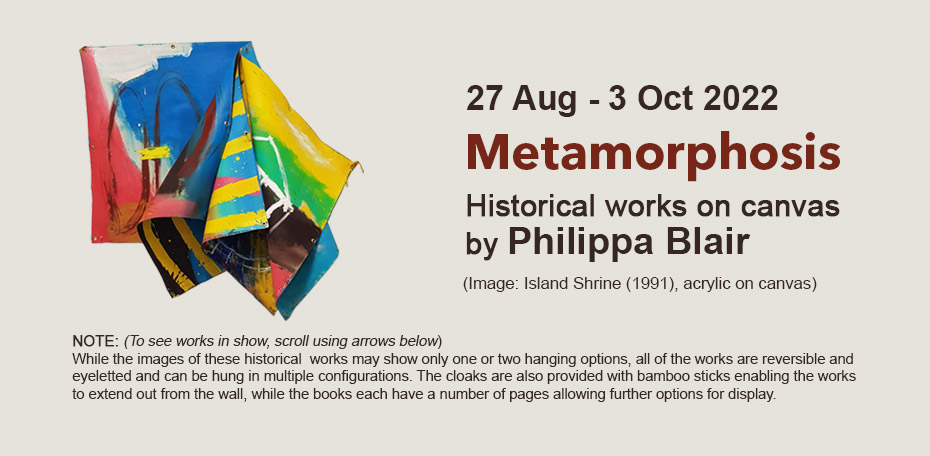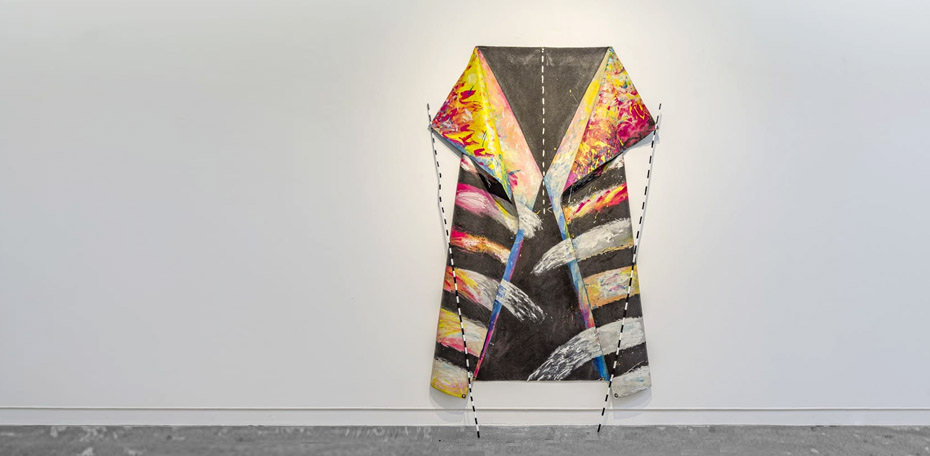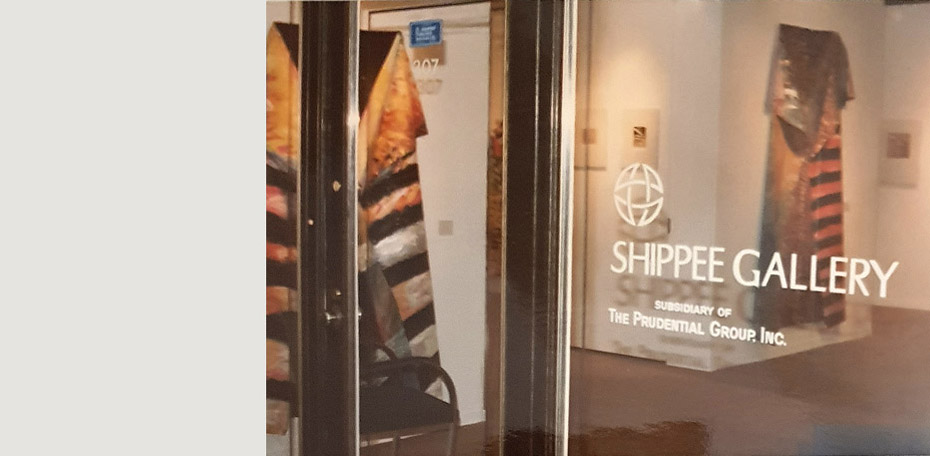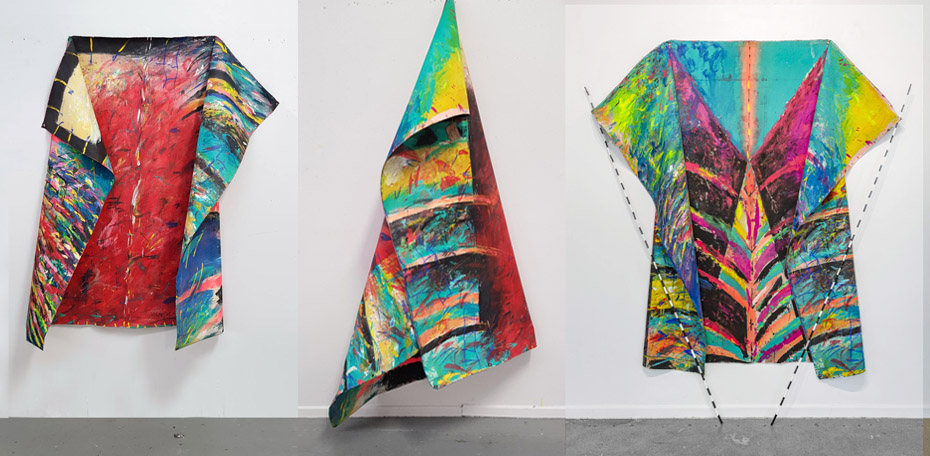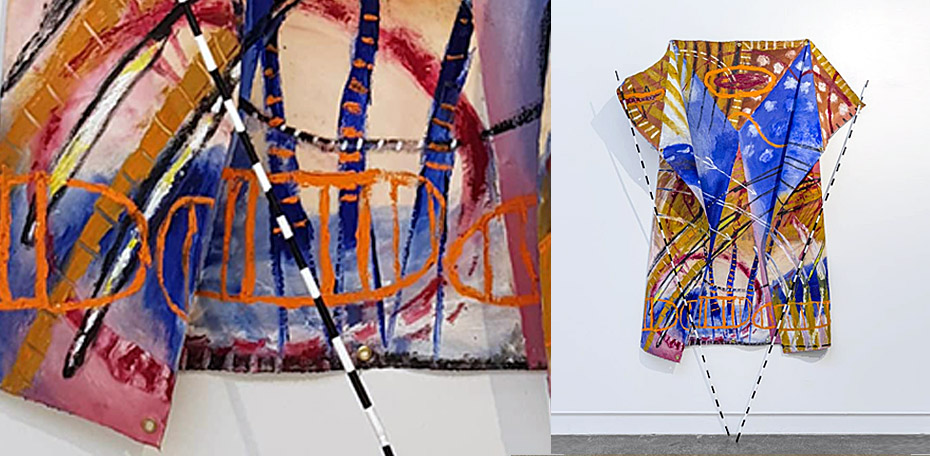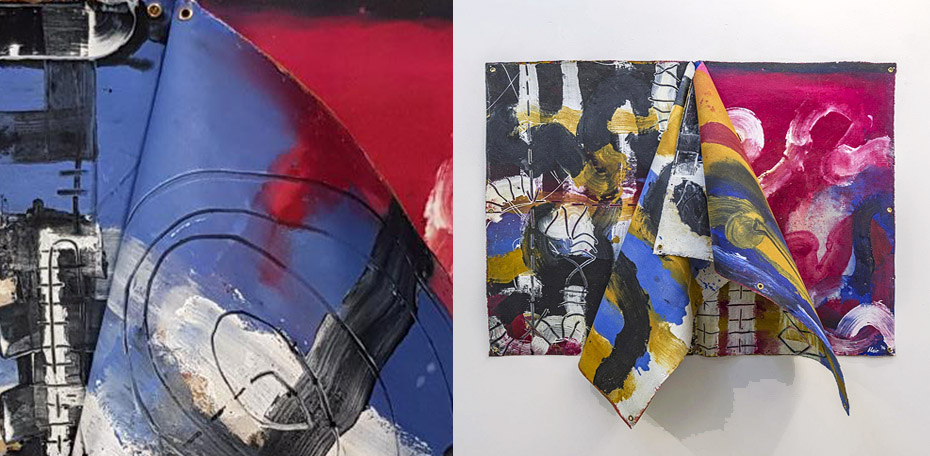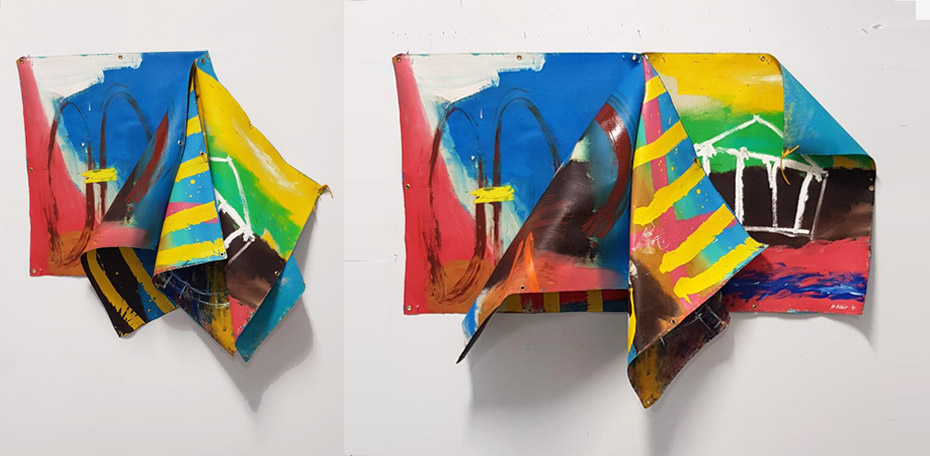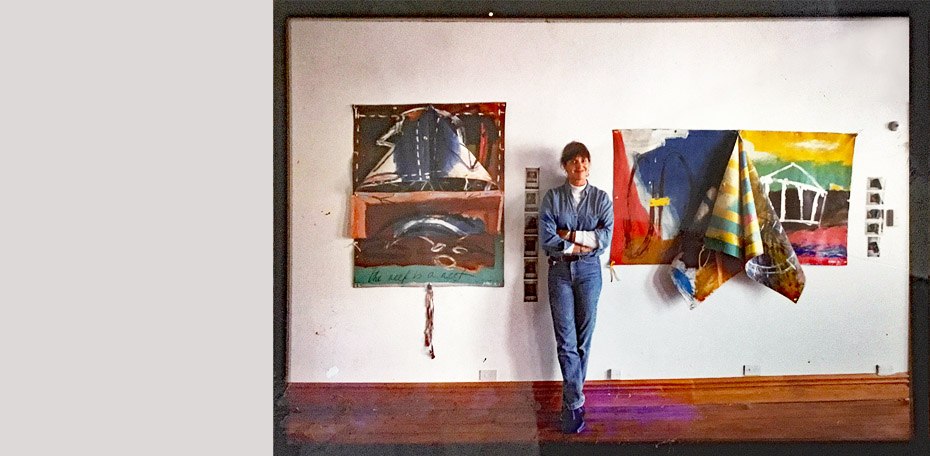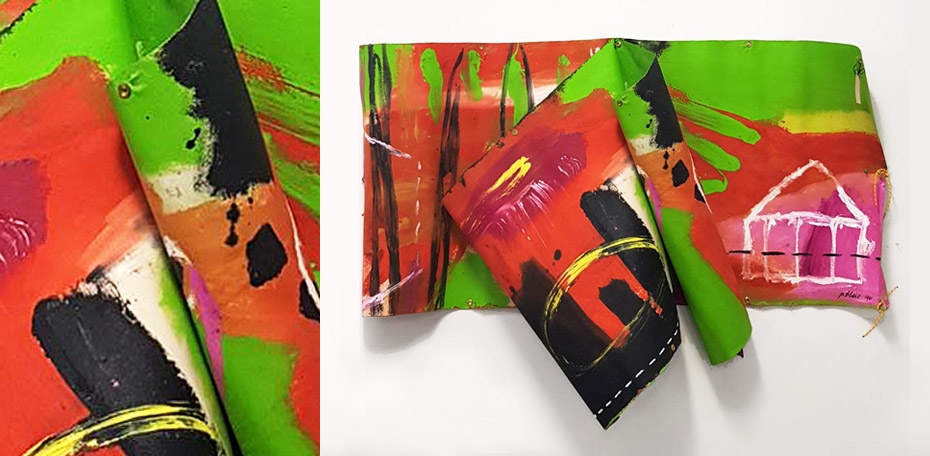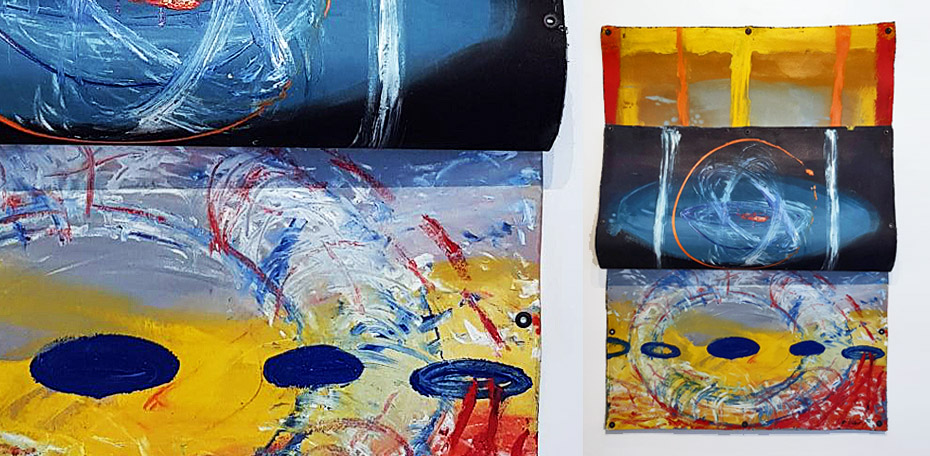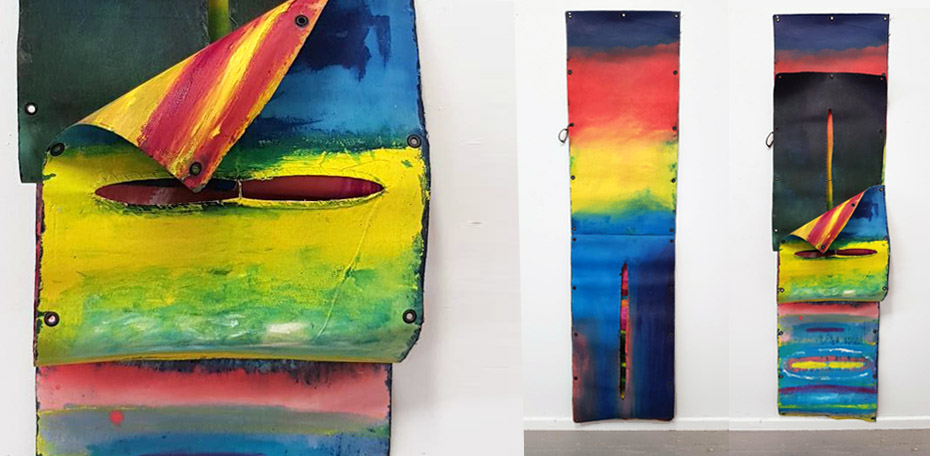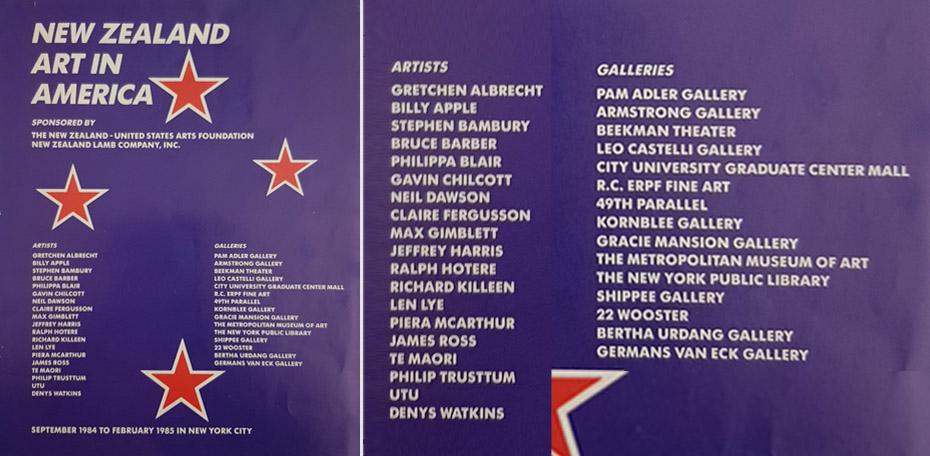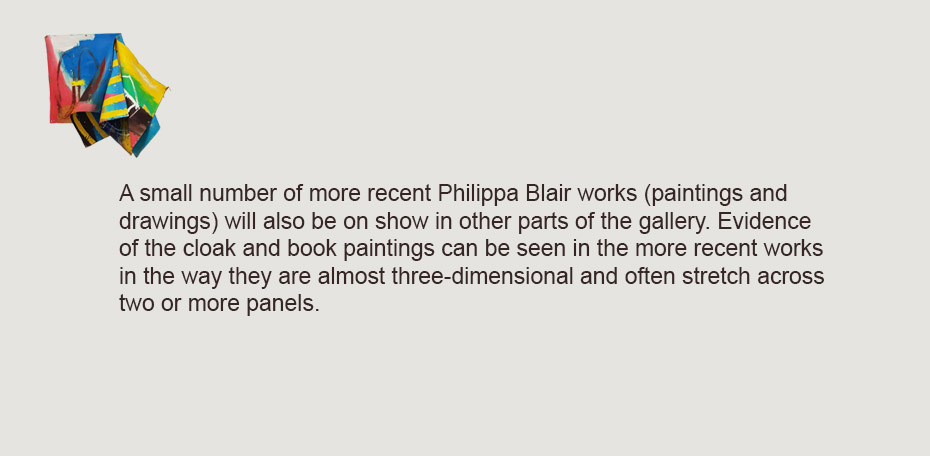Long interested in breaking down the traditional barriers of art making, and in the literal and symbolic idea of metamorphosis, Philippa Blair spent many years exploring the possibilities of unstretched, folded and hanging canvas, unrestrained by the limitations of the frame. She saw the changing states as a metaphor for life.
Blair’s trademark works of the 1970s-90s were canvas cloaks, teepees, and books. Blurring the line between 2D and 3D, these theatrical works reference her love of sculpture. Bamboo sticks extend the works beyond the wall, bringing them to life as if in a dance. The sticks are painted black and white, in part a reference to the porcupine quills sacred to many Native Americans. Long attracted to indigenous cultures, Blair’s appropriation of the teepee motif (a symbol for nomadic structure) fitted well with her ideas about paintings that could be moved and shaped.
Metamorphosis includes several of Blair’s cloak paintings created during the early 1980s and exhibited in a solo exhibition at the Shippee Gallery, New York in 1984, as part of NEW ZEALAND ART IN AMERICA. The event, sponsored by The New Zealand – United States Arts Foundation and curated by Mary Evangelista, involved some 17 artists (Billy Apple, Len Lye, Ralph Hotere and Gretchen Albrecht to name just a few) showing in 14 art galleries throughout New York City. The event was timed to coincide with the opening of Te Maori, a watershed exhibition of Māori art, at the Metropolitan Museum of Art, NYC.
Holding evidence of journeys both physical and artistic, the wrapping of unstretched canvas into the form of a cloak (a recognised symbol of status and mana in many indigenous cultures) implies the imagined presence of a body.
Hanging alongside her cloaks are a number of Blair’s ‘books’ from the 1990s. Many have an implied symmetry with a central vertical spine, while others comprise unbound ‘pages’, inviting personal interpretation when hanging. Pages can be viewed alone as individual works or chapters, or together as events that fold over and into one another, revealing traces of the past alongside glimpses into the future.
The flow of the paint on these heavy canvas pieces is given form by the boundaries of line, fold, overlap, or edge. All works are reversible, hand-stitched in linen thread and eyeletted – “exhausting work now I think of it” Blair recounts as she reflects on the creation of the works she holds dear. Confronting the viewer with their physical scale and boldness of execution, the seemingly endless options for hanging leaves a sense there is always more to reveal – a metaphor perhaps for Blair’s artistic and personal journey.


